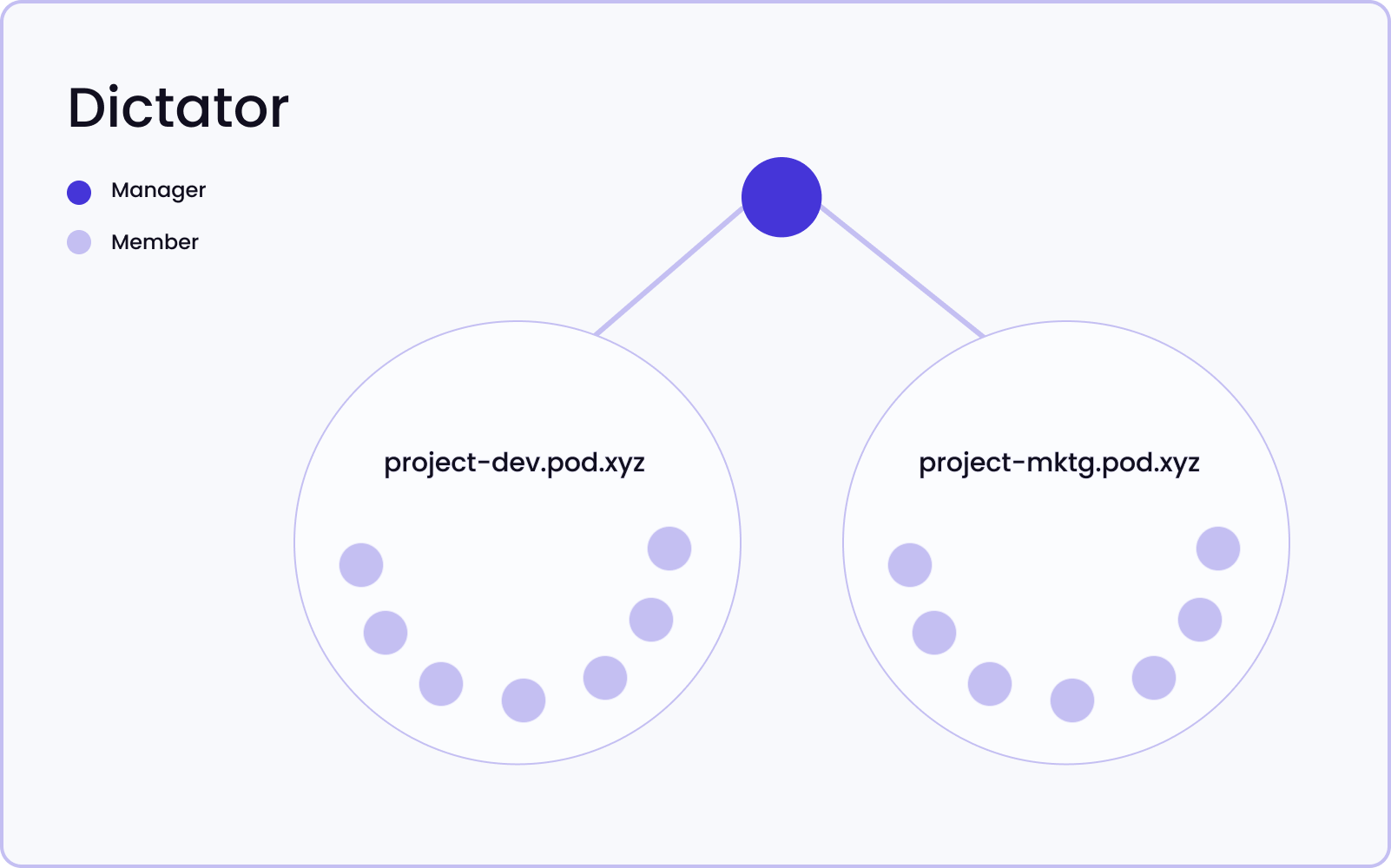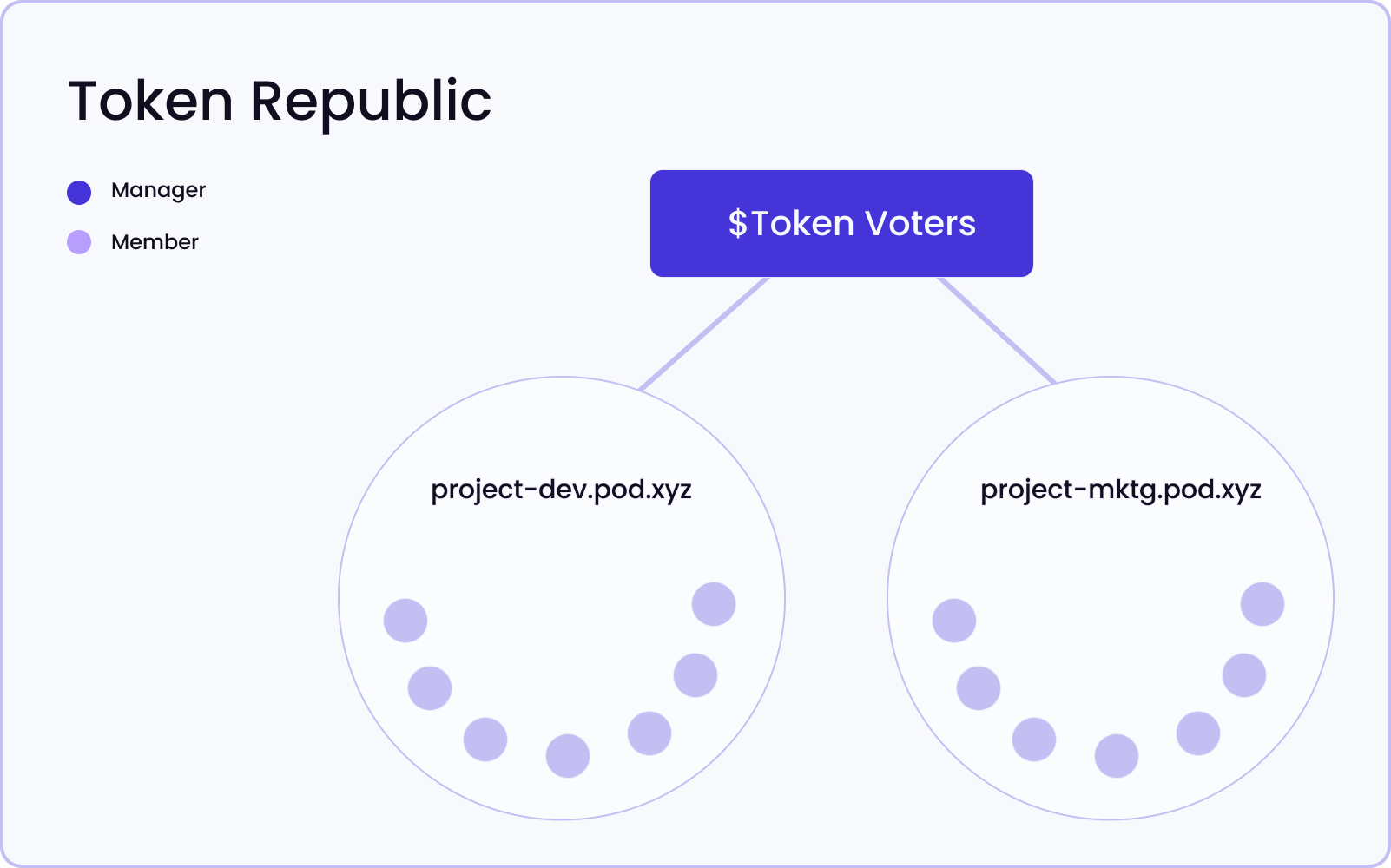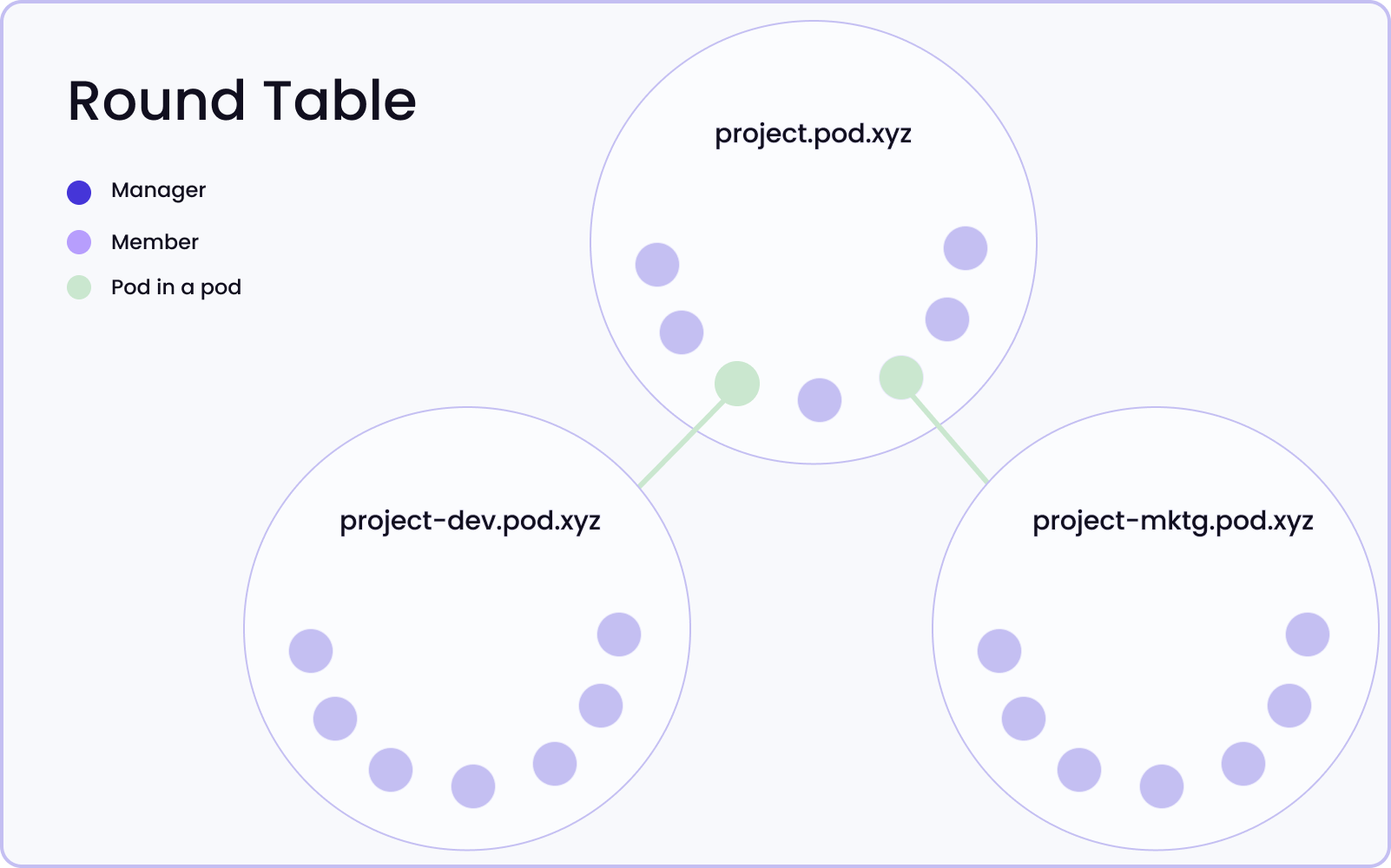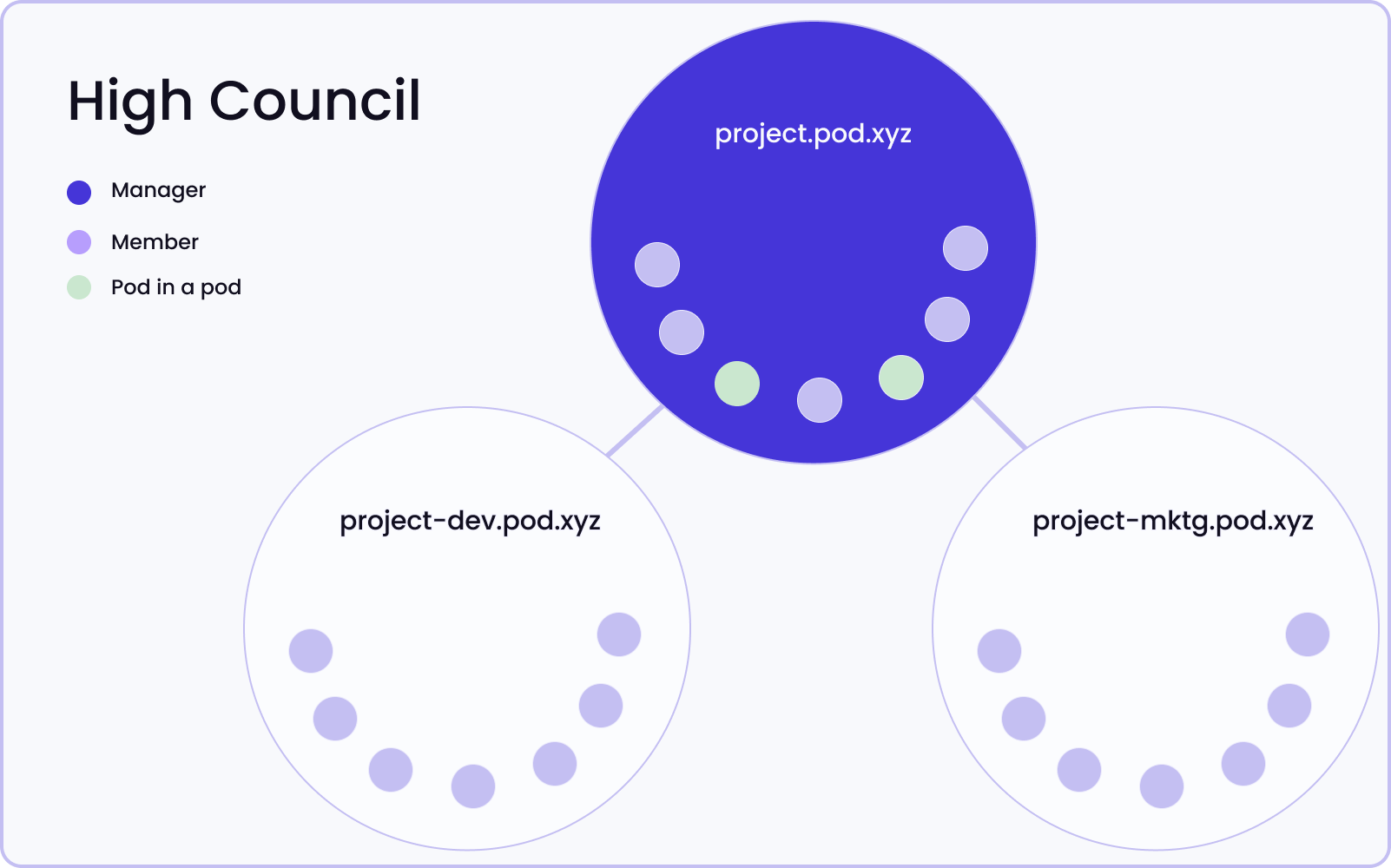Pod Configurations
Various configurations available for pods.
Pods can be constructed in a number of different ways to serve the needs of your organization. All potential configurations are different combinations of roles (the manager and the member) and who holds those roles (roles can be held by an EOA, a pod, or a smart contract).
You can find common pod configuration patterns below.
- The Dictator
- Token Republic
- Round Table
- High Council
- Embedded Manager
 The Dictator model is one where a person is serving as manager and has control (but does not necessarily sit on as a member) of the pods in your organization. This individual could be an Ops/Governance/Community lead or a trusted individual tasked with supporting managerial duties of the pods.
The Dictator model is one where a person is serving as manager and has control (but does not necessarily sit on as a member) of the pods in your organization. This individual could be an Ops/Governance/Community lead or a trusted individual tasked with supporting managerial duties of the pods.In the example below we have one manager supporting the project-dev and project-mktg pods.
 The Token Republic model is one where token holders serve as decision makers for membership and asset management of your pods. The decisions made by token holders would be executed by a smart contract that serves as the technical manager of your pods.
The Token Republic model is one where token holders serve as decision makers for membership and asset management of your pods. The decisions made by token holders would be executed by a smart contract that serves as the technical manager of your pods.In the example below, token holders' decisions are executed by a smart contract which serves as the manager of the project-dev and project-mktg pods.
 The Round Table model is one where there are no managers anywhere within your pods or broader organization. All decisions regarding membership management, asset management and membership rules will require a proposal and vote.
The Round Table model is one where there are no managers anywhere within your pods or broader organization. All decisions regarding membership management, asset management and membership rules will require a proposal and vote.In the example below, the project-dev and project-mktg pods are sub pods of the project pod. Project-dev and project-mktg can cast their approve/reject decisions for project pod proposals.
 The High Council model is one where a pod of individuals serves as the managers and supporting team for the rest of the organization. As an example, The High Council could be a group of elected stewards responsible for supporting the working groups of the organization. They have power to unilaterally add and remove members, manage assets and membership requirements.
The High Council model is one where a pod of individuals serves as the managers and supporting team for the rest of the organization. As an example, The High Council could be a group of elected stewards responsible for supporting the working groups of the organization. They have power to unilaterally add and remove members, manage assets and membership requirements.In the example below, project pod serves as the manager for the project-dev and project-mktg pods, which are also sub pods and can participate in proposals of the project pod.
 The Embedded Managers model is one where each pod has a pod member that also serves as the manager of the pod. These could be trusted individuals or elected stewards that have been granted elevated rights to quickly manage memberships, assets and membership rules.
The Embedded Managers model is one where each pod has a pod member that also serves as the manager of the pod. These could be trusted individuals or elected stewards that have been granted elevated rights to quickly manage memberships, assets and membership rules.In the example below, the project, project-dev and project-mktg pods all have a pod member that has been granted a manager right.